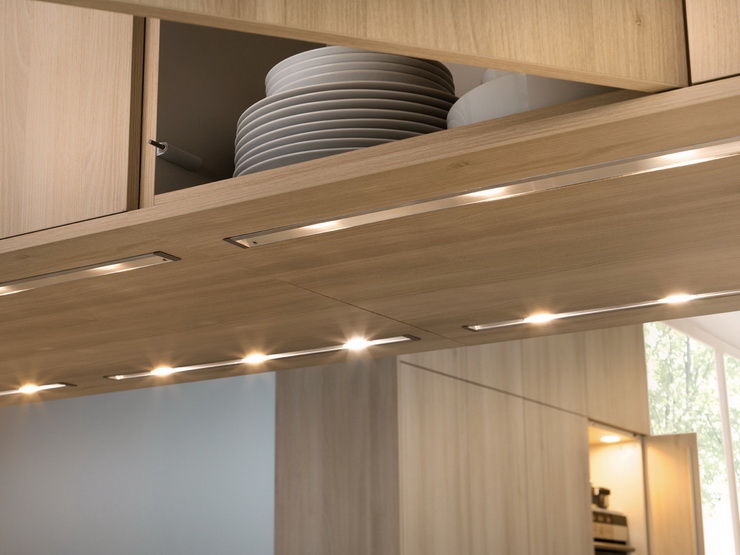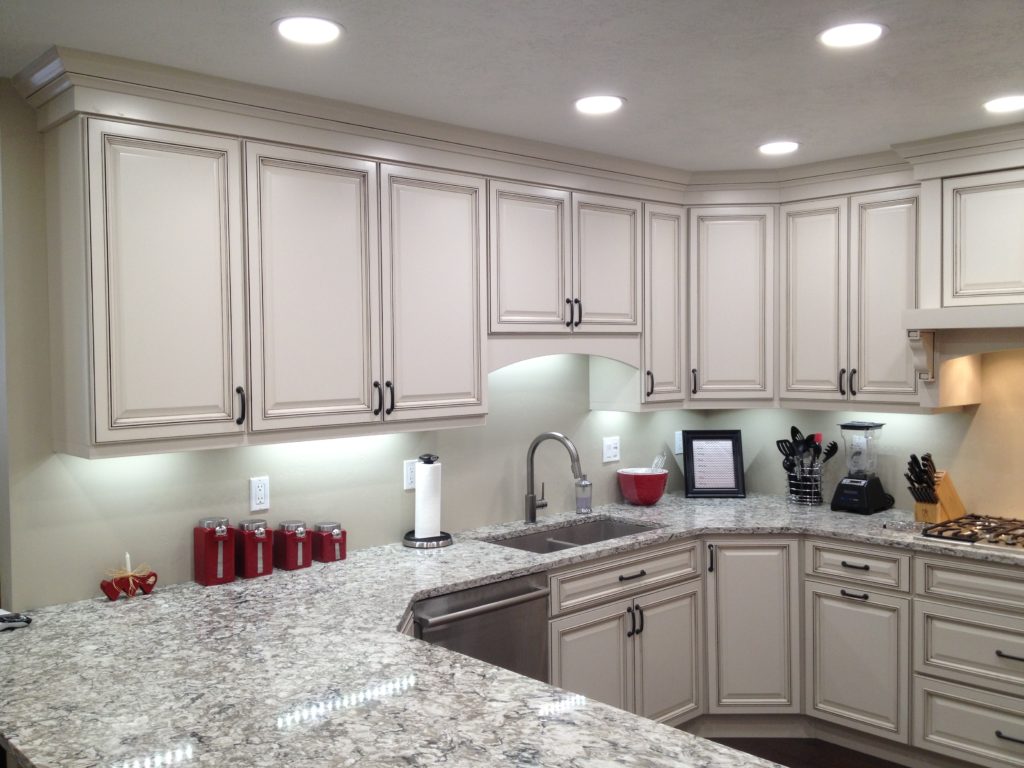LED Under Cabinet Lighting: Led Under Cabinet Lighting Motion
.jpg)
LED under cabinet lighting is a popular choice for homeowners looking to enhance their kitchen, bathroom, or any other space with added functionality and style. This type of lighting offers numerous advantages over traditional incandescent or fluorescent bulbs, making it a worthwhile investment.
Benefits of LED Under Cabinet Lighting
LED under cabinet lighting offers several benefits, making it a popular choice for homeowners.
- Energy Efficiency: LED bulbs consume significantly less energy compared to traditional incandescent bulbs, resulting in lower electricity bills and a reduced carbon footprint. On average, LEDs use 80% less energy than incandescent bulbs, making them a more sustainable option.
- Longevity: LED bulbs are known for their exceptional lifespan, lasting up to 25 times longer than incandescent bulbs. This translates to fewer replacements, reducing maintenance costs and hassle.
- Brightness: LED under cabinet lighting provides excellent brightness, effectively illuminating your workspace or display area. Unlike traditional bulbs, LEDs don’t dim over time, ensuring consistent illumination throughout their lifespan.
Types of LED Under Cabinet Lighting
LED under cabinet lighting comes in various forms, each offering distinct features and benefits.
- Strip Lights: These are flexible strips of LEDs that can be easily installed under cabinets or shelves. Strip lights are available in various lengths and colors, offering versatility in design and illumination.
- Puck Lights: Puck lights are small, circular LED lights that are often used in pairs or groups to create a focused illumination effect. They are typically mounted on a base that can be attached to the underside of cabinets or shelves.
- Recessed Lights: Recessed LED lights are installed directly into the cabinet or shelf, providing a sleek and integrated look. They offer a clean and unobtrusive lighting solution, ideal for modern kitchen designs.
Color Temperatures of LED Under Cabinet Lighting
LED under cabinet lighting is available in a range of color temperatures, each affecting the ambiance and mood of the space.
- Warm White (2700-3000K): This color temperature emits a warm, inviting glow, reminiscent of traditional incandescent bulbs. It is often used in living rooms, bedrooms, and dining areas to create a cozy and comfortable atmosphere.
- Neutral White (3000-4000K): This color temperature provides a bright, natural light, similar to daylight. It is commonly used in kitchens and bathrooms, where clear visibility is essential for tasks like cooking or grooming.
- Cool White (4000-5000K): This color temperature emits a cool, crisp white light, often used in office spaces or work areas where a bright and focused illumination is desired.
Motion Sensor Integration

Motion sensors are an increasingly popular addition to under cabinet lighting, providing a hands-free and energy-efficient way to illuminate your workspace. These sensors detect movement and automatically turn on the lights, eliminating the need to manually switch them on and off.
Types of Motion Sensors
Motion sensors come in various types, each with its unique operating principles and advantages. Understanding these differences can help you choose the best sensor for your under cabinet lighting needs.
- Passive Infrared (PIR) Sensors: These sensors are the most common type used in under cabinet lighting. They detect changes in infrared radiation emitted by moving objects. PIR sensors are relatively inexpensive, have a wide detection range, and are energy-efficient.
- Ultrasonic Sensors: These sensors emit ultrasonic sound waves and detect changes in the reflected waves, indicating movement. Ultrasonic sensors are less affected by temperature changes and are more suitable for detecting smaller movements than PIR sensors. However, they are generally more expensive than PIR sensors.
Benefits of Motion Sensor Integration
Integrating motion sensors into your under cabinet lighting offers several benefits:
- Convenience: Motion sensors eliminate the need to manually switch on the lights, providing a hands-free and effortless way to illuminate your workspace. Imagine walking into your kitchen and having the lights automatically turn on as you approach the counter.
- Energy Savings: Motion sensors only activate the lights when needed, reducing energy consumption compared to traditional lighting systems that stay on continuously. This can lead to significant cost savings on your electricity bills.
- Enhanced Security: Motion-activated under cabinet lighting can deter intruders by illuminating the area when movement is detected. This added security feature can provide peace of mind, especially in areas where visibility is limited.
Installation and Usage

Installing LED under cabinet lighting with motion sensors is a straightforward process that can significantly enhance your home’s functionality and aesthetics. This section will guide you through the installation steps, offer tips for optimal placement, and provide practical applications for these lights.
Installation Steps
Before you begin, ensure you have all the necessary materials, including LED strips, motion sensors, power supply, connectors, and mounting tape. Here’s a step-by-step guide:
- Determine the desired location and length of the LED strips. Measure the area where you want to install the lights and purchase the appropriate length of LED strips.
- Choose the appropriate motion sensor. Consider factors like detection range, activation angle, and mounting options.
- Mount the motion sensor. Position the sensor strategically to ensure optimal coverage of the desired area.
- Connect the LED strips to the power supply. Use the provided connectors to connect the LED strips to the power supply.
- Mount the LED strips. Use the mounting tape to secure the LED strips under the cabinets. Ensure they are evenly spaced and properly aligned.
- Connect the motion sensor to the LED strips. Connect the motion sensor to the LED strips according to the manufacturer’s instructions.
- Test the installation. Once the installation is complete, test the motion sensor and ensure the LED lights activate properly.
Placement Tips, Led under cabinet lighting motion
The placement of motion sensors plays a crucial role in the effectiveness of under cabinet lighting. Here are some tips to optimize sensor placement:
- Consider the area you want to illuminate. Place the sensor in a position that provides coverage of the desired area.
- Avoid obstructions. Ensure that the sensor’s view is unobstructed by cabinets or other objects.
- Adjust the activation angle. Some motion sensors allow you to adjust the activation angle, which can be helpful for optimizing coverage.
- Experiment with placement. Try different locations to find the best spot for your specific needs.
Practical Applications
LED under cabinet lighting with motion sensors can be used in various areas of your home, offering convenience and functionality:
- Kitchens: These lights can illuminate countertops and work areas, providing hands-free lighting while preparing meals.
- Bathrooms: Motion-activated lights can enhance safety and convenience in bathrooms, illuminating the space when you enter.
- Pantries: Motion-activated lights can make it easier to find items in dark pantries, eliminating the need to fumble for switches.
Led under cabinet lighting motion – LED under cabinet lighting with motion sensors is a fantastic way to add a touch of modern convenience to your kitchen. It’s like having a personal spotlight that illuminates the countertop whenever you need it. And speaking of modern touches, you might want to consider a picket fence bedroom wall for a unique and charming aesthetic.
But back to the kitchen, those LED lights can also help create a more inviting atmosphere, especially when paired with a warm white color temperature.
LED under cabinet lighting with motion sensors is a popular choice for kitchens and bathrooms, adding convenience and a touch of ambiance. But if you want to take things to the next level, consider RGBW under cabinet lighting , which allows you to create a wide range of colors and effects, perfect for setting the mood or highlighting specific areas.
Motion-activated RGBW lights can be a fun and functional addition to any space, providing both practical illumination and a touch of personality.